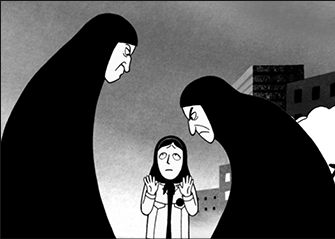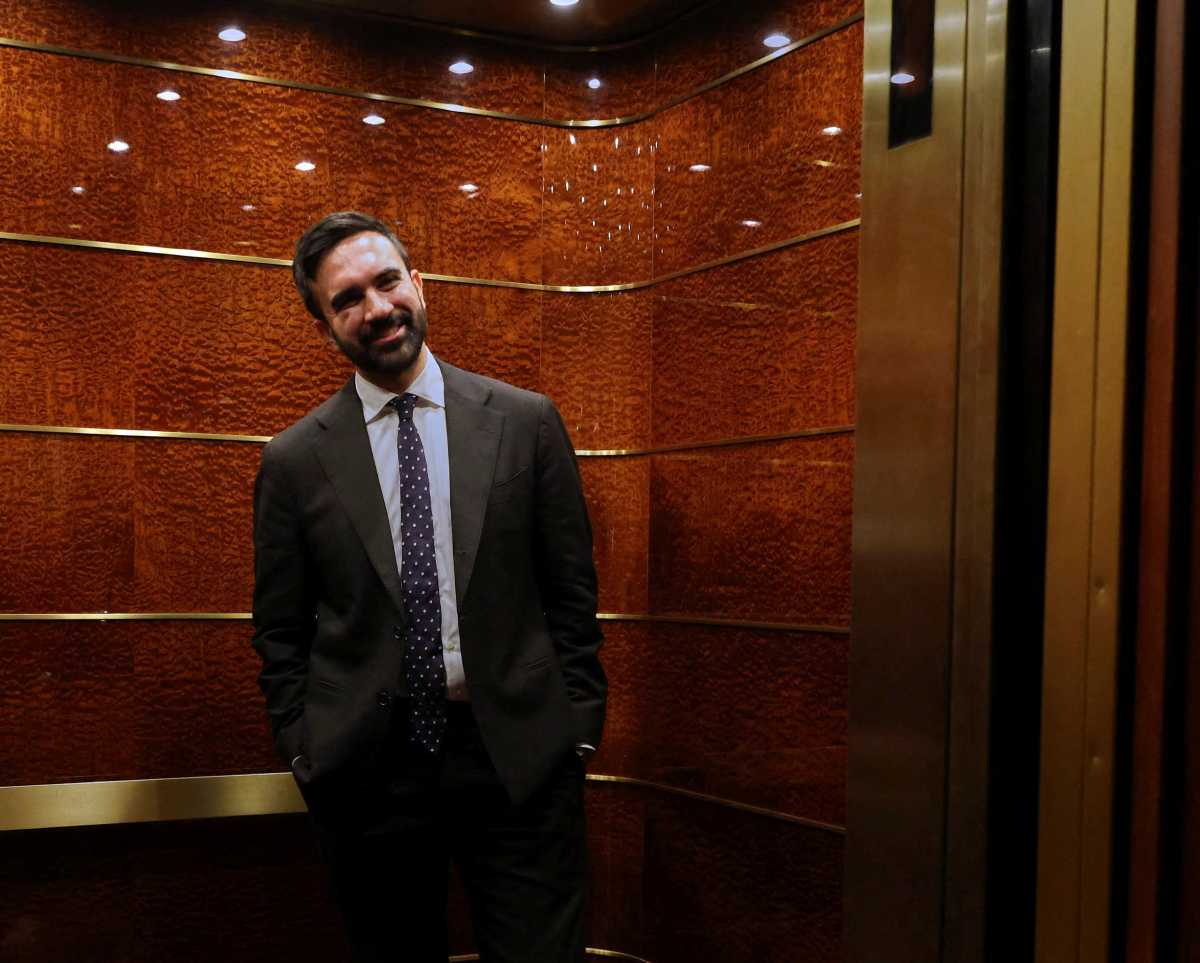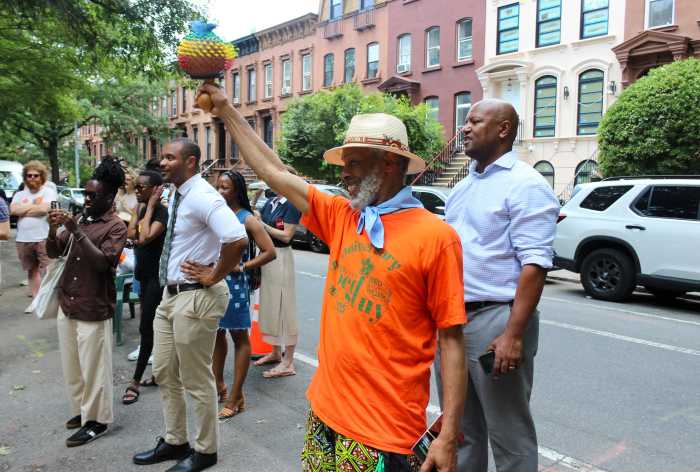By Leonard Quart
Persepolis
Written and Directed by Marjane Satrapi and Vincent Paronnaud
Now at the Angelika
18 West Houston St. at Mercer
(212-995-2000; angelikafilmcenter.com)
Marjane Satrapi and Vincent Paronnaud‘s “Persepolis” has already won the Award for Best Animated film from the New York Film Critics Circle, and will probably win a number of others by the time the award season is over. Based on Satrapi’s own imaginative, autobiographical graphic novel, the film is vividly evocative of the murderous repression of Iranian society, and the coming of age of an emotionally volatile young woman struggling to shape an independent self.
“Persepolis” is hand drawn in striking black and white (a few scenes are touched with color) with settings richly shaded in grays that grant a rich, painterly quality to its images. The film begins with a lively, inquisitive, innocent 9-year-old, Marjane (voiced by Gabrielle Lopes as a child and Chiara Mastroianni as a teenager and adult) observing a popular uprising against the Shah’s dictatorship (with its CIA-trained torturers), and its replacement by an even more oppressive Islamic state. Her leftist intellectual family had suffered under the Shah. Their existence becomes only more horrific, however, under the puritanical and tyrannical Islamic dictatorship, as women are forced to dress in black burkas — this supine commitment to religiosity being the key to wielding power — and Iran engages a senseless eight-year war with Iraq (1980-88), claiming at least 300,000 Iranian lives (“martyrs?”) and wounding more than 500,000 others.
Marjane’s loving father and mother (the voice of Catherine Deneuve), and the much more distinctive character of the knowing, profane, and beloved grandmother (voiced by the nonagenarian Danielle Darrieux) see relatives and friends imprisoned, assassinated, or fleeing into exile. Marjane, raised on stories of political courage, is clever and fearless and develops, with her parents’ love and support, a bold and incisive voice. However, when she is 14, her parents, anxious about the safety of a girl with a rebellious nature, send her off to school in Vienna.
Here she undergoes both the pleasure and pain of adolescence. Some of her experiences are wryly comic — she becomes part of a group of wealthy, pretentious, nihilistic punks, and has youthful love affairs permeated with absurd highs and lows. Others are poignant — she has difficulty owning up to being an Iranian in the West, telling a man she meets in a bar that she’s French, and she experiences a profound loneliness that leads to her emotional and physical collapse after graduation.
A homesick, anguished Marjane then returns to Teheran where she attends an art class whose models in an anatomy class are shrouded by burkas. She ultimately finds that she can’t adjust to a world where daily behavior is policed by religious thugs, and sanctimoniousness rules. And so she heads for Paris, leaving Iran for good.
Satrapi’s self-portrait eschews sentimentality for raw honesty. Marjane, who bravely maintains her integrity and refuses to become absorbed by Iranian Islamic fundamentalism, can also behave badly — in one instance framing an innocent stranger to escape police arrest. And the film, with its iris shots, jump cuts, and fades to black, is an inventive blend of realism and expressionism. There are grounded realistic scenes of family parties and and airport lounges, and others that are more phantasmagoric and abstract. Satrapi includes a scene of heavenly discussion between God and Marx —Marjane’s fantasy advisers — and a brilliant one of our heroine mutating, with difficulty, from small child into independent woman.
“Persepolis” skillfully uses animation to cogently encapsulate the murderous history of contemporary Iran. Though I personally find it hard to be emotionally stirred by the Sturm und Drang of animated characters, this is a truly original film.


































